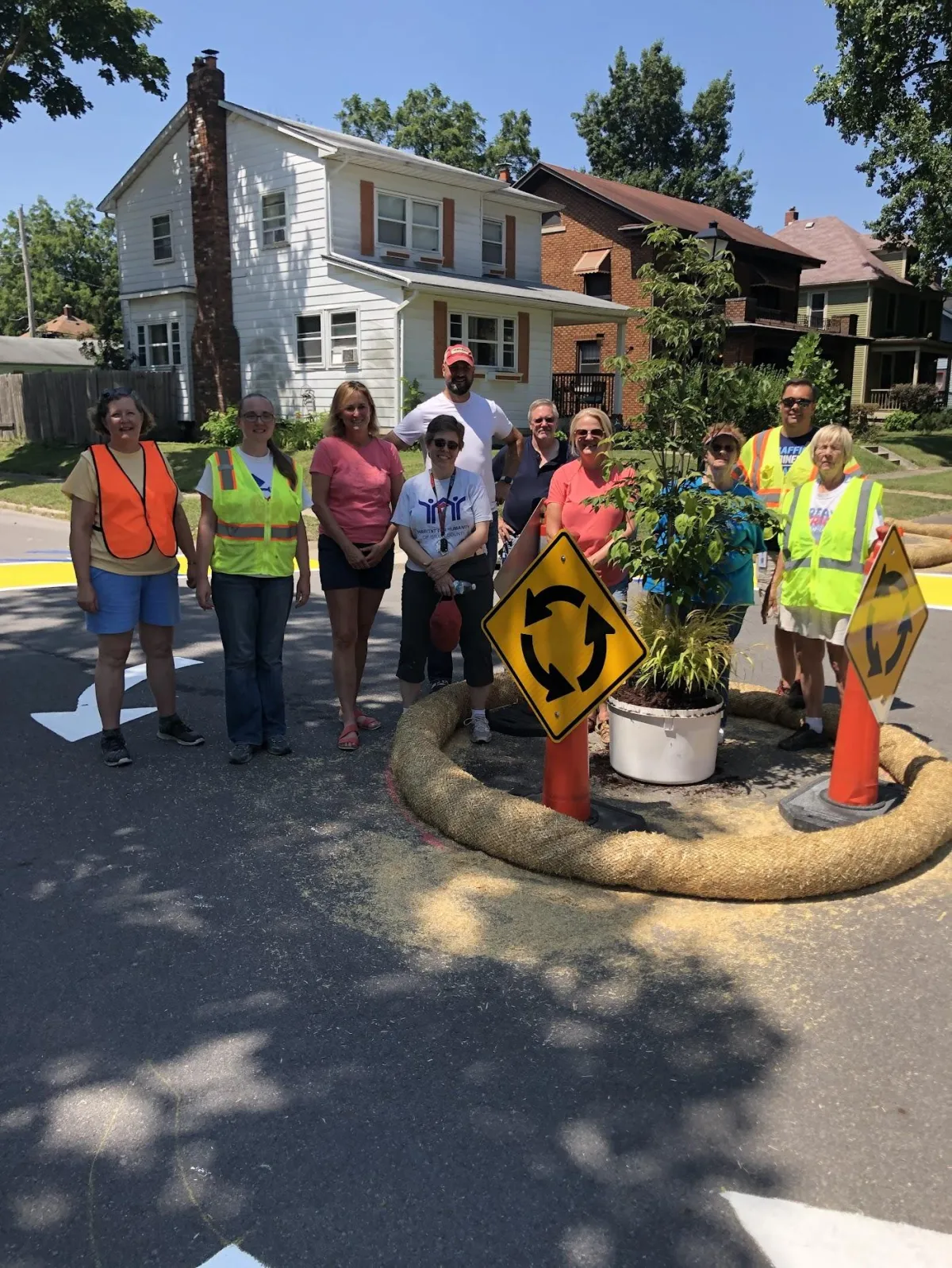Learn

What is Tactical Urbanism?
We avoid places where we don’t feel safe.
During the last 75 years cities have undergone a radical transformation. Where people used to walk and horses lazily tread, cars now zip and zag. City planners and engineers had a lot of pressure to move cars faster and more efficiently through city streets, but this shift in priorities has come at a huge price.
Rather unintentionally, streets have overrun America. That means it is hard to walk around or ride a bike. Extra wide roads make it easy for drivers to move quickly (often well above the speed limit), and as cars go faster the road designs tend to scale up to meet their speed. It’s a vicious cycle of speeding cars that breed roads that encourage more speeding cars.
All the while pedestrians suffer. Urban areas can be difficult to navigate on foot because of deteriorating sidewalks and extra fast cars. Suburban areas are even worse – many strip malls and big box stores don’t even have sidewalks. By design we have miles of businesses that can only be visited if you own and drive a car.
For those without a car, sometimes due to health or economic reasons (cars are very expensive for low-income families) it’s literally impossible to reach many parts of midwestern cities, and because we’ve ignored things like sidewalks, the urban stores are tricky at best.
Quick Tests for Finding Quick Solutions.
Enter Tactical Urbanism. A new, quick, and often community driven, approach to changing streets.
When cities look at a street reconstruction they plan for a couple years, wait on budget allocations, and spend a summer digging and building. The changes are slow to happen, and for better or worse, they’re permanent. This isn’t a bad thing – cities should invest in long-term improvements, and they shouldn’t move too quickly (or recklessly) when they’re spending millions of tax payer dollars.
But what if their big reconstructions create new problems that they didn’t account for? Wouldn’t it be nice if they could test a few short-term solutions before making big, broad changes? Tactical Urbanism is the solution.
Tactical Urbanism (TU) is a collaborative technique for testing short-term changes to city streets, sidewalks and public spaces. It’s focus is usually on slowing cars down so pedestrians and bicyclists can move about more comfortably and safely. Sometimes it includes art that makes abandoned spaces feel safer and more inviting.
Instead of expensive materials like concrete and asphalt they use materials that are “good enough”, portable and low-cost. Things like straw bales, temporary (tempera) paint, rubber curbs, traffic cones, and painted artwork. The equipment is usually set up by volunteers and only stays up for a few days. During which, volunteers watch and learn. They look for problems and try to identify ways to make their design better.
In the end, a short-term Tactical Urbanism test can validate ideas and identify solutions to tough transportation problems. It’s also great at getting neighborhood and decisionmaker buy-in because it bypasses all of the “what if…” discussions, and lets people see, feel and experience the changes for themselves.
Tactical Urbanism Then, and Now.
Tactical Urbanism was traditionally a technique that angry residents used to prove a point. Often under the cover of darkness they’d set up barricades, paint new stripes, and set up things that would force cars to slow down.
But things are changing. Now forward thinking cities work with neighborhoods to identify trouble areas and test solutions that might help. When this happens it’s hard to call the process “tactical urbanism” because it’s more of a “collaborative traffic calming test.”
Whatever you call it, tactical urbanism is a fantastic way of working together, learning, and finding out-of-the box ways to make neighborhoods better and streets safer.
What does Tactical Urbanism Look like?
That’s a tough question because it can look like all sorts of things! But in general you’ll find a group of volunteers (and sometimes city staff) meeting at an intersection or city street. They spend a morning laying down temporary paint, installing traffic cones and maybe painting crosswalks with bright paint. Later, you might see outdoor furniture set up and neighbors gathering for a celebration (think block-party) and time to discuss the changes.
During the celebration you’ll probably see volunteers asking for feedback from visitors. The thoughts are recorded on surveys that will be compiled and given to decision makers.
After the celebration, or whatever timeline the municipality agrees to, the materials are completely removed (again by volunteers). Straw bales are composted, traffic cones are removed, and temporary paint dissolves after a couple of rains.
If done correctly you won’t know anything ever happened unless you talk to local residents. If things went well during the test you should see ongoing discussions between volunteers, the neighborhood, and city officials. These meetings should discuss what worked, what didn’t, and what could be made permanent.



